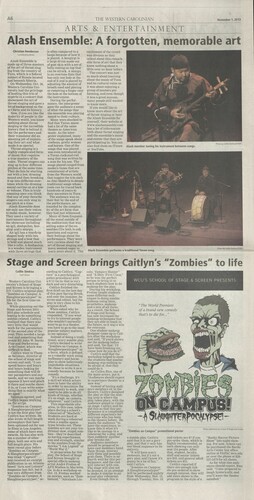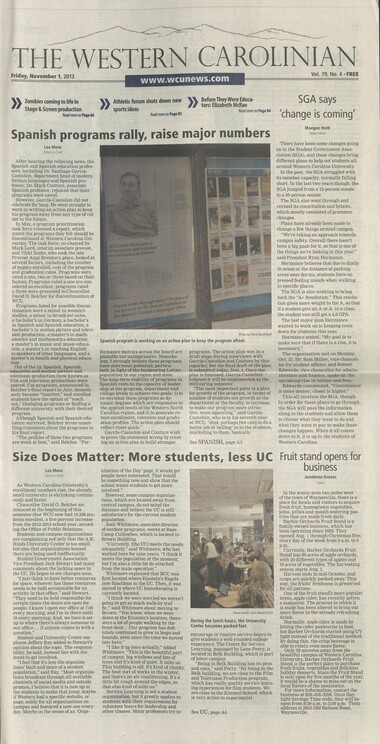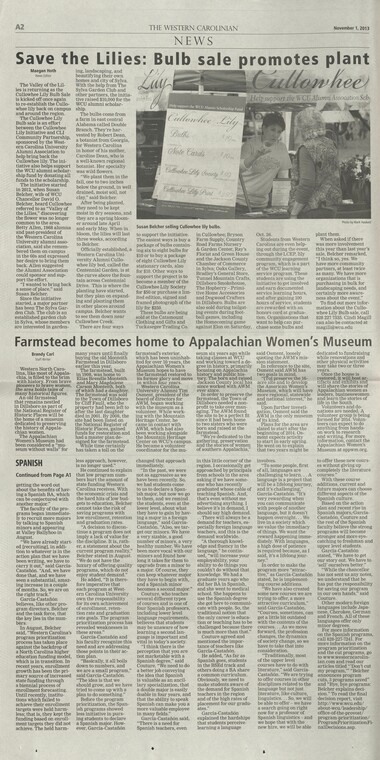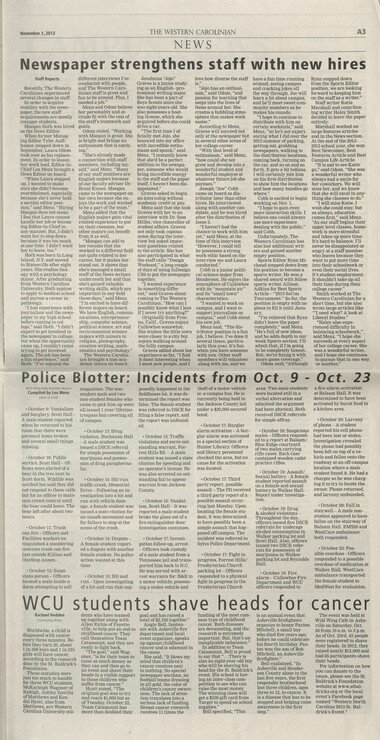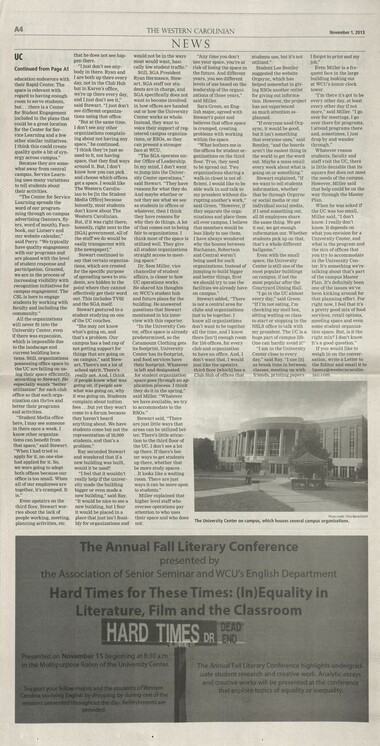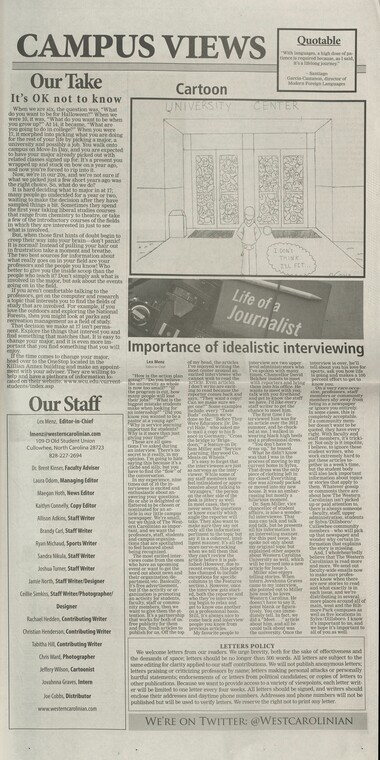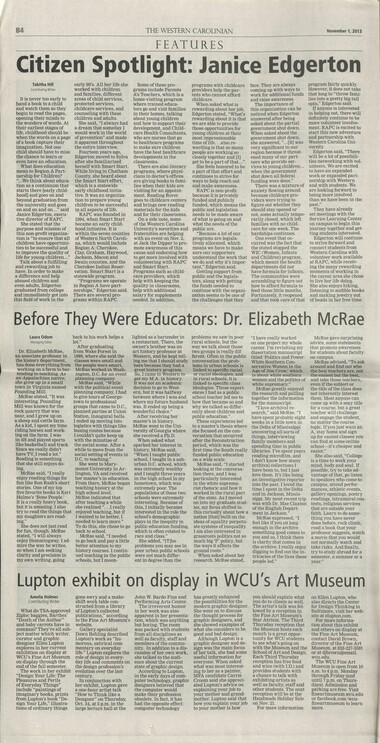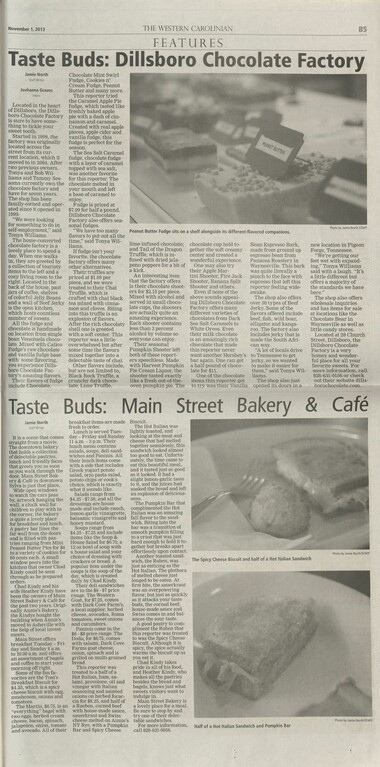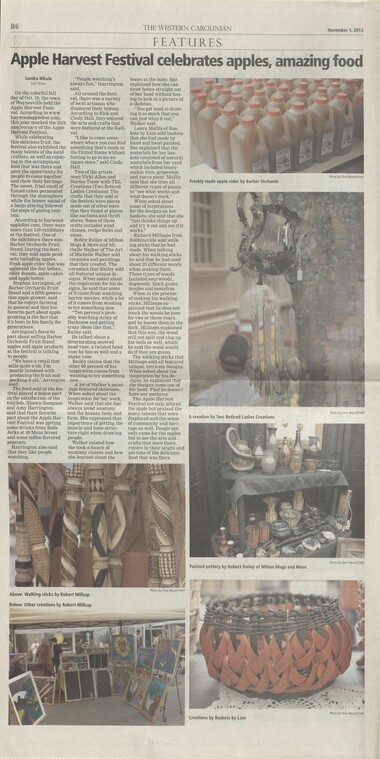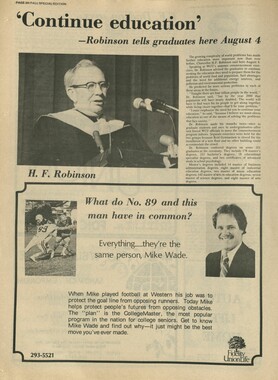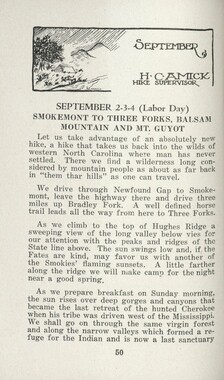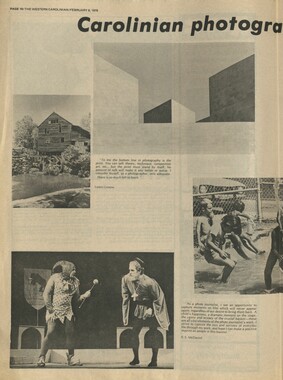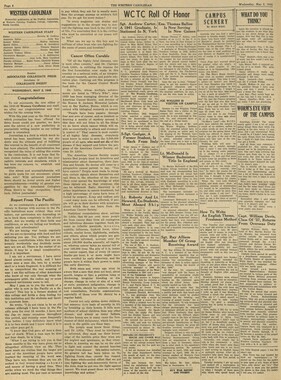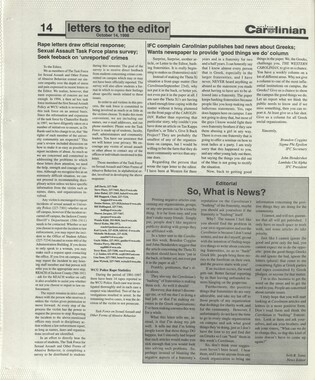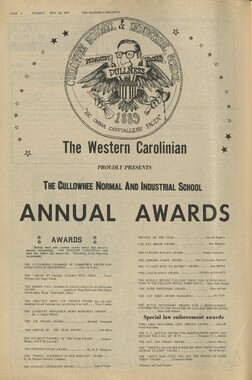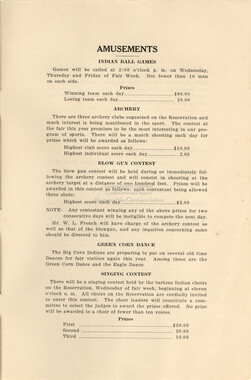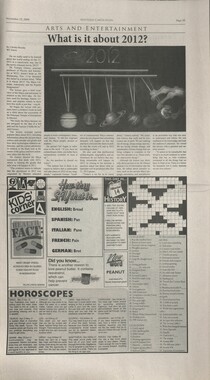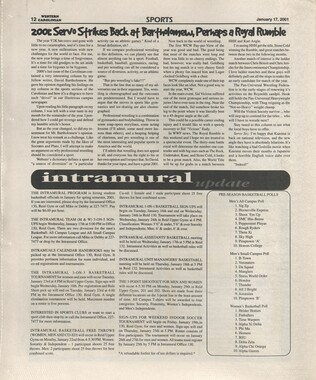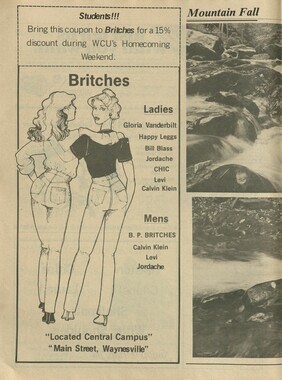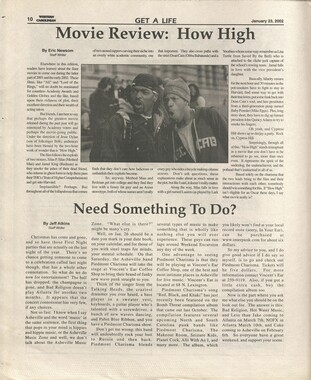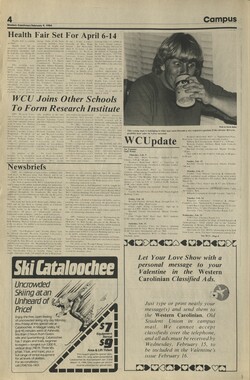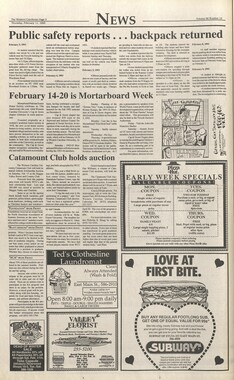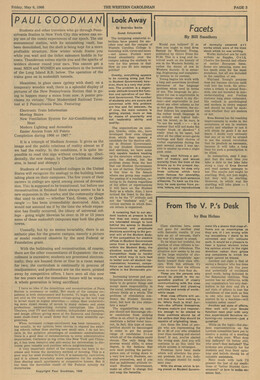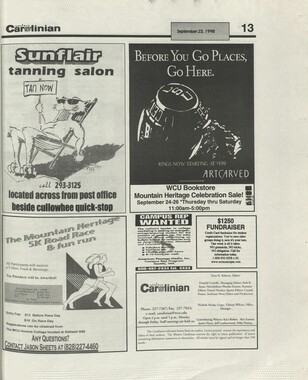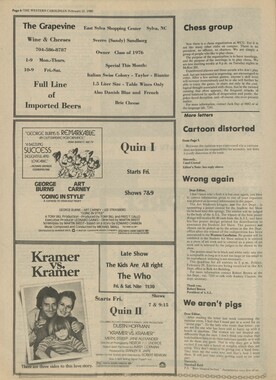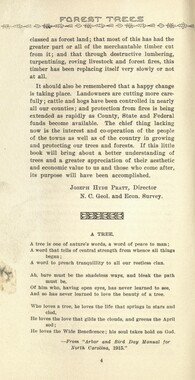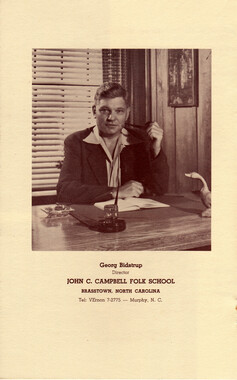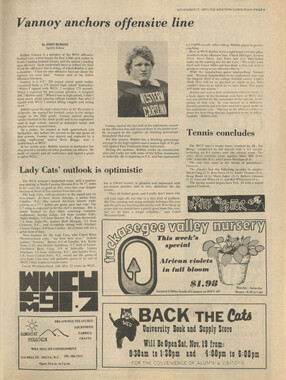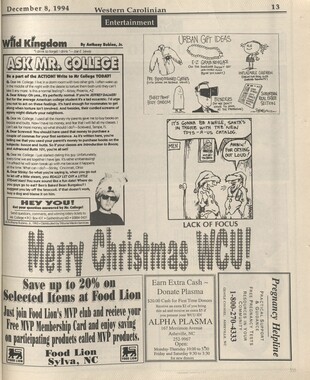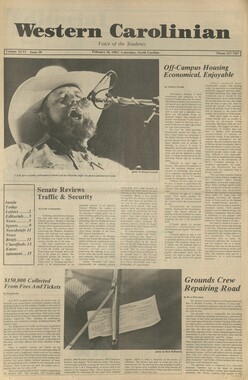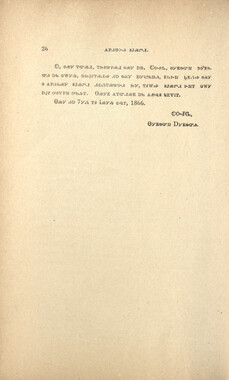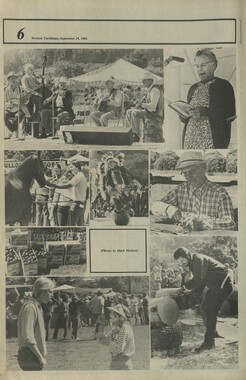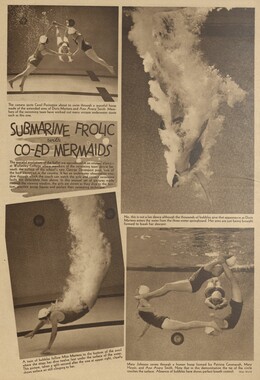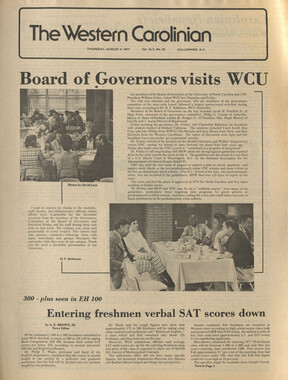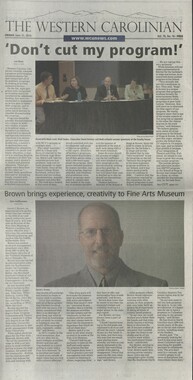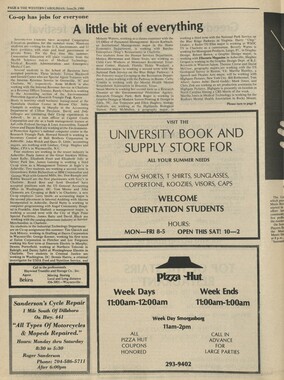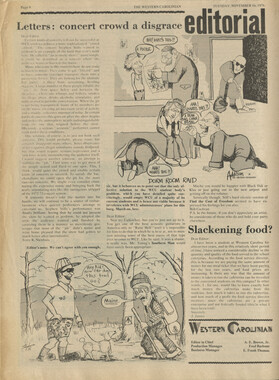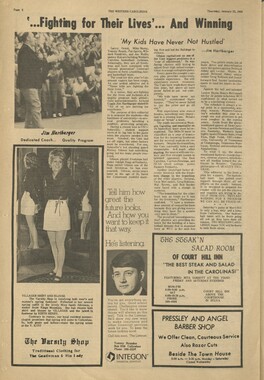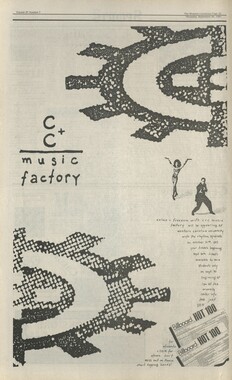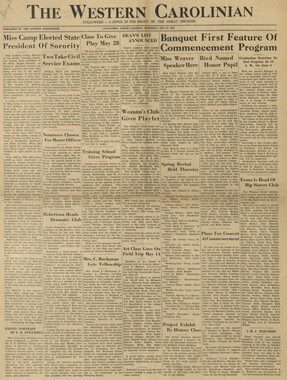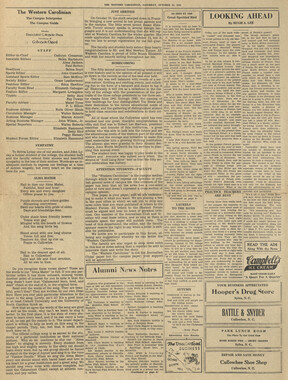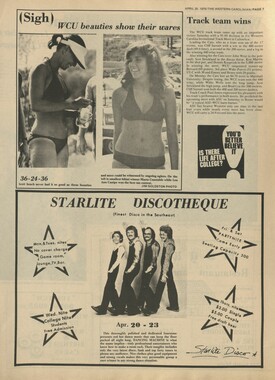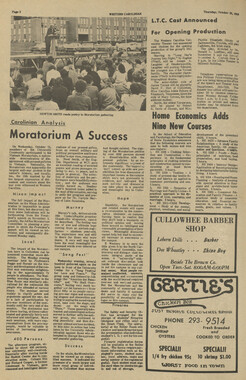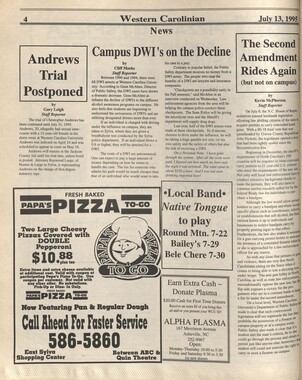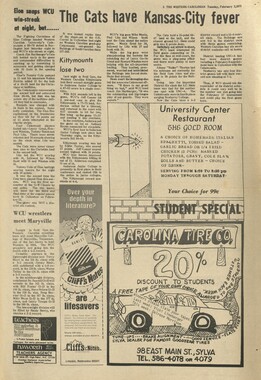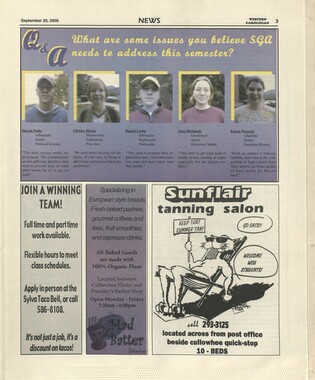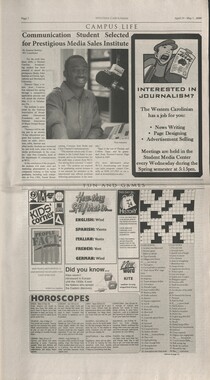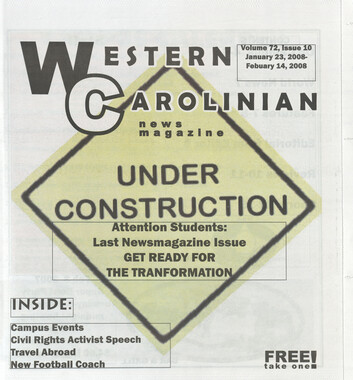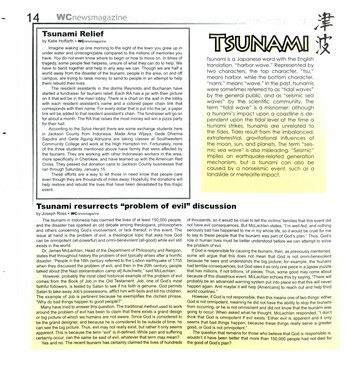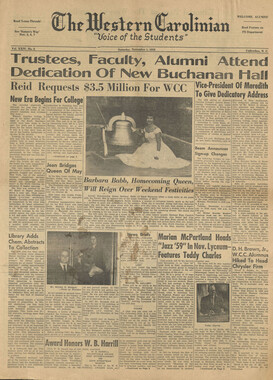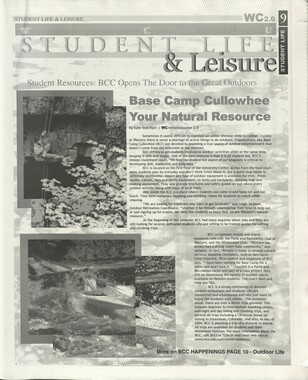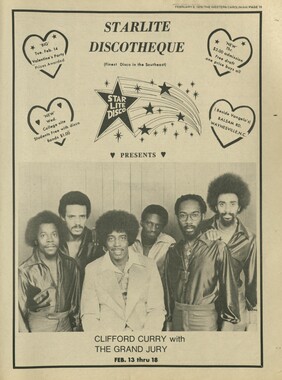Western Carolina University (21)
View all
- Canton Champion Fibre Company (2308)
- Cherokee Traditions (291)
- Civil War in Southern Appalachia (165)
- Craft Revival (1942)
- George Masa Collection (137)
- Great Smoky Mountains - A Park for America (2900)
- Highlights from Western Carolina University (422)
- Horace Kephart (973)
- Journeys Through Jackson (159)
- LGBTQIA+ Archive of Jackson County (85)
- Oral Histories of Western North Carolina (316)
- Picturing Appalachia (6797)
- Stories of Mountain Folk (413)
- Travel Western North Carolina (153)
- Western Carolina University Fine Art Museum Vitreograph Collection (129)
- Western Carolina University Herbarium (92)
- Western Carolina University: Making Memories (738)
- Western Carolina University Publications (2491)
- Western Carolina University Restricted Electronic Theses and Dissertations (146)
- Western North Carolina Regional Maps (71)
- World War II in Southern Appalachia (131)
University of North Carolina Asheville (6)
View all
- Allanstand Cottage Industries (62)
- Appalachian National Park Association (53)
- Bennett, Kelly, 1890-1974 (1463)
- Berry, Walter (76)
- Brasstown Carvers (40)
- Carver, George Washington, 1864?-1943 (26)
- Cathey, Joseph, 1803-1874 (1)
- Champion Fibre Company (233)
- Champion Paper and Fibre Company (297)
- Cherokee Indian Fair Association (16)
- Cherokee Language Program (22)
- Crowe, Amanda (40)
- Edmonston, Thomas Benton, 1842-1907 (7)
- Ensley, A. L. (Abraham Lincoln), 1865-1948 (275)
- Fromer, Irving Rhodes, 1913-1994 (70)
- George Butz (BFS 1907) (46)
- Goodrich, Frances Louisa (120)
- Grant, George Alexander, 1891-1964 (96)
- Heard, Marian Gladys (60)
- Kephart, Calvin, 1883-1969 (15)
- Kephart, Horace, 1862-1931 (313)
- Kephart, Laura, 1862-1954 (67)
- Laney, Gideon Thomas, 1889-1976 (439)
- Masa, George, 1881-1933 (61)
- McElhinney, William Julian, 1896-1953 (44)
- Niggli, Josephina, 1910-1983 (10)
- North Carolina Park Commission (105)
- Osborne, Kezia Stradley (9)
- Owens, Samuel Robert, 1918-1995 (11)
- Penland Weavers and Potters (36)
- Roberts, Vivienne (15)
- Roth, Albert, 1890-1974 (142)
- Schenck, Carl Alwin, 1868-1955 (1)
- Sherrill's Photography Studio (2565)
- Southern Highland Handicraft Guild (127)
- Southern Highlanders, Inc. (71)
- Stalcup, Jesse Bryson (46)
- Stearns, I. K. (213)
- Thompson, James Edward, 1880-1976 (226)
- United States. Indian Arts and Crafts Board (130)
- USFS (683)
- Vance, Zebulon Baird, 1830-1894 (1)
- Weaver, Zebulon, 1872-1948 (58)
- Western Carolina College (230)
- Western Carolina Teachers College (282)
- Western Carolina University (2008)
- Western Carolina University. Mountain Heritage Center (18)
- Whitman, Walt, 1819-1892 (10)
- Wilburn, Hiram Coleman, 1880-1967 (73)
- Williams, Isadora (3)
- Cain, Doreyl Ammons (0)
- Crittenden, Lorraine (0)
- Rhodes, Judy (0)
- Smith, Edward Clark (0)
- Appalachian Region, Southern (2940)
- Asheville (N.C.) (1944)
- Avery County (N.C.) (26)
- Blount County (Tenn.) (195)
- Buncombe County (N.C.) (1680)
- Cherokee County (N.C.) (283)
- Clay County (N.C.) (556)
- Graham County (N.C.) (238)
- Great Smoky Mountains National Park (N.C. and Tenn.) (525)
- Haywood County (N.C.) (3573)
- Henderson County (N.C.) (70)
- Jackson County (N.C.) (4919)
- Knox County (Tenn.) (35)
- Knoxville (Tenn.) (13)
- Lake Santeetlah (N.C.) (10)
- Macon County (N.C.) (421)
- Madison County (N.C.) (216)
- McDowell County (N.C.) (39)
- Mitchell County (N.C.) (135)
- Polk County (N.C.) (35)
- Qualla Boundary (982)
- Rutherford County (N.C.) (78)
- Swain County (N.C.) (2185)
- Transylvania County (N.C.) (270)
- Watauga County (N.C.) (12)
- Waynesville (N.C.) (86)
- Yancey County (N.C.) (72)
- Aerial Photographs (3)
- Aerial Views (60)
- Albums (books) (4)
- Articles (1)
- Artifacts (object Genre) (228)
- Bibliographies (1)
- Biography (general Genre) (2)
- Cards (information Artifacts) (38)
- Clippings (information Artifacts) (192)
- Copybooks (instructional Materials) (3)
- Crafts (art Genres) (622)
- Depictions (visual Works) (21)
- Design Drawings (1)
- Digital Moving Image Formats (2)
- Drawings (visual Works) (185)
- Envelopes (101)
- Exhibitions (events) (1)
- Facsimiles (reproductions) (1)
- Fiction (general Genre) (4)
- Financial Records (12)
- Fliers (printed Matter) (67)
- Glass Plate Negatives (381)
- Guidebooks (2)
- Internegatives (10)
- Interviews (817)
- Land Surveys (102)
- Letters (correspondence) (1045)
- Manuscripts (documents) (618)
- Maps (documents) (177)
- Memorandums (25)
- Minutes (administrative Records) (59)
- Negatives (photographs) (6090)
- Newsletters (1290)
- Newspapers (2)
- Notebooks (8)
- Occupation Currency (1)
- Paintings (visual Works) (1)
- Pen And Ink Drawings (1)
- Periodicals (193)
- Personal Narratives (10)
- Photographs (12976)
- Plans (maps) (1)
- Poetry (6)
- Portraits (4568)
- Postcards (329)
- Programs (documents) (181)
- Publications (documents) (2444)
- Questionnaires (65)
- Relief Prints (26)
- Sayings (literary Genre) (1)
- Scrapbooks (282)
- Sheet Music (2)
- Slides (photographs) (402)
- Songs (musical Compositions) (2)
- Sound Recordings (796)
- Specimens (92)
- Speeches (documents) (18)
- Tintypes (photographs) (8)
- Transcripts (324)
- Text Messages (0)
- A.L. Ensley Collection (275)
- Appalachian Industrial School Records (7)
- Appalachian National Park Association Records (336)
- Axley-Meroney Collection (2)
- Bayard Wootten Photograph Collection (20)
- Bethel Rural Community Organization Collection (7)
- Blumer Collection (5)
- C.W. Slagle Collection (20)
- Canton Area Historical Museum (2110)
- Carlos C. Campbell Collection (462)
- Cataloochee History Project (64)
- Cherokee Studies Collection (4)
- Daisy Dame Photograph Album (5)
- Daniel Boone VI Collection (1)
- Doris Ulmann Photograph Collection (112)
- Elizabeth H. Lasley Collection (1)
- Elizabeth Woolworth Szold Fleharty Collection (4)
- Frank Fry Collection (95)
- George Masa Collection (173)
- Gideon Laney Collection (452)
- Hazel Scarborough Collection (2)
- Hiram C. Wilburn Papers (28)
- Historic Photographs Collection (236)
- Horace Kephart Collection (861)
- Humbard Collection (33)
- Hunter and Weaver Families Collection (1)
- I. D. Blumenthal Collection (4)
- Isadora Williams Collection (4)
- Jesse Bryson Stalcup Collection (47)
- Jim Thompson Collection (224)
- John B. Battle Collection (7)
- John C. Campbell Folk School Records (80)
- John Parris Collection (6)
- Judaculla Rock project (2)
- Kelly Bennett Collection (1482)
- Love Family Papers (11)
- Major Wiley Parris Civil War Letters (3)
- Map Collection (12)
- McFee-Misemer Civil War Letters (34)
- Mountain Heritage Center Collection (4)
- Norburn - Robertson - Thomson Families Collection (44)
- Pauline Hood Collection (7)
- Pre-Guild Collection (2)
- Qualla Arts and Crafts Mutual Collection (12)
- R.A. Romanes Collection (681)
- Rosser H. Taylor Collection (1)
- Samuel Robert Owens Collection (94)
- Sara Madison Collection (144)
- Sherrill Studio Photo Collection (2558)
- Smoky Mountains Hiking Club Collection (616)
- Stories of Mountain Folk - Radio Programs (374)
- The Reporter, Western Carolina University (510)
- Venoy and Elizabeth Reed Collection (16)
- WCU Gender and Sexuality Oral History Project (32)
- WCU Mountain Heritage Center Oral Histories (25)
- WCU Oral History Collection - Mountain People, Mountain Lives (71)
- WCU Students Newspapers Collection (1923)
- Western North Carolina Tomorrow Black Oral History Project (69)
- William Williams Stringfield Collection (2)
- Zebulon Weaver Collection (109)
- African Americans (390)
- Appalachian Trail (35)
- Artisans (521)
- Cherokee art (84)
- Cherokee artists -- North Carolina (10)
- Cherokee language (21)
- Cherokee pottery (101)
- Cherokee women (208)
- Church buildings (190)
- Civilian Conservation Corps (U.S.) (111)
- College student newspapers and periodicals (2012)
- Dams (108)
- Dance (1023)
- Education (222)
- Floods (63)
- Folk music (1015)
- Forced removal, 1813-1903 (2)
- Forest conservation (220)
- Forests and forestry (1197)
- Gender nonconformity (4)
- Great Smoky Mountains National Park (N.C. and Tenn.) (181)
- Hunting (46)
- Landscape photography (25)
- Logging (119)
- Maps (83)
- Mines and mineral resources (9)
- North Carolina -- Maps (18)
- Paper industry (38)
- Postcards (255)
- Pottery (135)
- Railroad trains (72)
- Rural electrification -- North Carolina, Western (3)
- School integration -- Southern States (2)
- Segregation -- North Carolina, Western (5)
- Slavery (5)
- Sports (452)
- Storytelling (243)
- Waterfalls -- Great Smoky Mountains (N.C. and Tenn.) (66)
- Weaving -- Appalachian Region, Southern (280)
- Wood-carving -- Appalachian Region, Southern (328)
- World War, 1939-1945 (173)
Western Carolinian Volume 79 Number 04
Item
Item’s are ‘child’ level descriptions to ‘parent’ objects, (e.g. one page of a whole book).
-
-
AG THE WESTERN CAROLINIAN November 1, 2013. A RS. 8c ENTERTAINMENT Alash Ensemble: A forgotten, memorable art Christian Henderson Contributing Writer Alash Ensemble is made up of three masters of the art of throat sing- ing from the country of Tuva, which is a federal subject of Russia located just beneath Siberia. On Wednesday, Oct. 16, Western Carolina Uni- versity had the privilege of hosting this trio of experts in a concert that showcased the art of throat singing and gave a bit of background on the art form and its history. Now, if you are like the majority of people in the Western world, you know nothing about throat singing or the incredible history that is behind it, but the performers and their translator did an amazing job of explain- ing their art and what made it so special. Throat singing isa highly complicated form of music that requires a true mastery of the voice. Throat singers can sing up to four different pitches at the same time. They do this by starting out with a low, droning sound and then breaking it up into different over- tones while the droning -, sound carries on at a low- er volume. This is truly amazing once you think that any of your favorite singers can only sing in one pitch at a time. Alash Ensemble does not only use their voices to make music, however. They used a variety of instruments throughout the showcase including an igil, doshpuluu, ken- girgi anda murgu. An igil has a teardrop shaped body with two strings and a bow that is held and played much like a cello. A doshpuluu is a wooden instrument with three Sir1nes that is often compared toa banjo because of how it is played. A kengirgi is a large drum made out of goat skin with a set of bells resting on top that can be struck. A murgu is an overtone flute that has only one hole at the end of it and is played by adjusting the amount of breath used and placing or removing a finger over the hole at the bottom of the instrument. During the perfor- mance, the interpreter gave the audience a sense of what the songs that the ensemble was playing meant to their culture. Many were shocked to find that Tuvan music had a lot of the same themes as American music. As the inter- preter explained, many of the songs speak about cowboys, pretty women and horses. One of the songs that was played was even introduced as a Tuvan rock-and-roll song that was written by aman for his son. The songs played ranged from modern tunes that are reminiscent of artists from the Western world that inspire the trio such as Jimi Hendrix to deeply traditional songs whose roots can be traced back hundreds of years to their ancestors in Tuva. The audience was on their feet by the end of the performance, as- tounded by the complex- ity of the art form that they had just witnessed. - Many of them frequent- ed the stand outside of the auditorium that was selling some of the en- sembles CDs both to ask questions and express their feelings about the performance. They were very curious about the art.of throat singing and many seemed eager to learn more about it. The excitement of the crowd was obvious as they talked about this remark- able form of art that they knew nothing about a little over an hour before. The concert was just as much about learning about the music of Tuva and its cultural value as it was about enjoying a group of masters per- forming, and even though it was a great success, many people still wanted to know more. If you would like to know more about the art of throat singing or hear the Alash Ensemble for yourself, their website at www.alashensemble.com has a lot of information both about throat singing and the ensembles music and events that they are participating in. You can also find them on iTunes or YouTube. Alash member tuning his instrument between songs. Alash Ensemble pila a traditional Tuvan song. Photo by Ceillie Simkiss/STAFF Photo by Ceillie Simkiss/STAFF Stage and Screen brings Caitlyn s Zombies to life Ceillie Simkiss Staff Writer Western Carolina Uni- versitys School of Stage and Screen is bringing a DV. Caitlyn original play, Zombies on Campus: A Slaughterpocalypse! to life for the first time on Nov. 13. While planning out the Stage and Screen 2013 2014 play schedule and hoping to do something zombie-related, Caitlyn realized that there was very little that would work for the parameters of the second play of the year. They needed a large cast and something that would fill John W. Bardo Fine and Performing Arts Center, which was difficult to find. Caitlyn went to Thom- as Salzman, director of the school of stage and screen and said, I can spend hours and hours and hours looking for something that will fit our parameters and our needs, and we can maybe squeeze it here and pinch it there and maybe shove it in, or Ican write some- thing that is exactly what we need. Salzman agreed, and Caitlyn began working on the script. Zombies on Campus: A Slaughterpocalypse! is not the first play that Caitlyn has written. He also wrote 16 full-length screenplays that have been optioned out for use in films in Los Angeles, some of which have won awards. He has also writ- ten a number of other plays, both one acts and full-length plays. His most recent play before Zombies on Campus: A Slaughterpocalypse! was titled Capture and received an excerpt publication in an Atlanta- based Arts and Leisure magazine last fall, but it was very different from Zombies on Campus: A Slaughterpocalypse!, ac- cording to Caitlyn. Cap- ture is a psychological police procedural with a 9/11 tie-in that is very dark and very disturbing. Caitlyn finished the first draft on the last day of this past Spring Break, and over the summer, he wrote and edited, but the play is very close to his original draft. When asked why he chose zombies, Caitlyn responded, If you want to try to interest people who wouldnt normally want to go to a theater, you have to go to the most popular subject matters, in my opinion. Instead of doing a tradi- tional, scary zombie play, Caitlyn decided to write Zombies on Campus: A Slaughterpocalypse! as a farce, which is defined as a comedic work using buffoonery and horse- play to show ludicrously improbable situations. He chose to write it asa comedy because he loves comedy. Tts a challenge, its a Skill set which actors have to have the ability in order to maximize the opportunity to work, you need to be able to do all kinds of things, whether its on stage, on camera, whatever, said Caitlyn. This improbable situ- ation, in this case, takes place during a schools rehearsal of Macbeth. Students are hard at work during a rehearsal when a zombie apoca- lypse breaks out. These zombies are not your tra- ditional slow, stupid zom- bies theyre described as having superhuman size and strength, similar to the zombies from the movies I Am Legend or World War Z. In preparation for this play, the School of Stage and Screen brought in special effects makeup artist Andr Freitas of AFX Studios in Marietta, Ga. to do a workshop on Oct. 12. Freitas worked on movies, such as Zom- bieland, Abraham Lin- coln: Vampire Hunter and X-Men: First Class, so he was the perfect person to bring in to teach students how to do makeup for the play. . During his workshop, Freitas taught students some different tech- niques to doing zombie makeup using latex, prosthetics, makeup and a mix of all three. As aresult, the School of Stage and Screen has now increased the makeup techniques that they are able to teach in the future, so it was a win for everyone. One student makeup designer came up to Cait- lyn after the workshop and said, If youd shown me the makeup before and said, Do that, Id have been freaking out, cause how do you do it? Caitlyn said that the workshop helped to show the students that zombie makeup was nothing to be afraid of, that they could do it. As Cullen Ries, one of the main actors, put it, Audiences should expect to experience theater ina new way. Instead of having audi- ence members sit in the theatre, Caitlyn designed the play so that the seat- ing area is where the play takes place, with the audience seated in risers on stage. Caitlyn said he did this so that this per- formance is a completely different experience for everyone who has been to the theatre before. He wants the audience to have the experience, to know this is what its like to be onstage in a rehearsal for a play, and then suddenly another play breaks out. Audience members should be prepared to have cast members hand them things, interact with them and possibly rab them. There is no ourth wall for this per- formance, and the cast will interact with you. The stage will also not be dressed, in an attempt to make it similar to an actual play rehearsal. Even though this is WCU'S The World Premiere of a brand new comedy thats to die for... SCHOOL OF STAGE & SCREEN PRESENTS Zombies on Campus promotional poster a zombie play, Caitlyn said that it is not a gory play, and that it only has one blood sequence in its entirety. Tt will have scary moments, but its not a gory play, and I know its gonna be a lot of fun, said Caitlyn. Zombies on Campus: A Slaughterpocalypse! will be performed nightly from Wednesday, Nov. 13, through Tuesday, Nov. 19, and tickets are $7 if you pre-order them, which is highly recommended, as each showing can only seat 154 people. After that, student, faculty, staff and senior tickets are $10, and general adult tickets are $15. Caitlyn reported if there are enough tick- ets pre-ordered to show enough interest, they will add more shows to the program in the style of a Photo submitted by School of Stage and Screen Rocky Horror Picture Show late night show- ing. For now, tickets can be purchased the Bardo Arts Center box office, online at FAPAC.wcu.edu or over the phone at 828- 227-2479 for all shows. As for what else audi- ences should expect, Ries said, Come prepared to laugh hysterically, and you'll leave the theater satisfied.
Object
Object’s are ‘parent’ level descriptions to ‘children’ items, (e.g. a book with pages).
-
The Western Carolinian is Western Carolina University's student-run newspaper. The paper was published as the Cullowhee Yodel from 1924 to 1931 before changing its name to The Western Carolinian in 1933.
-

